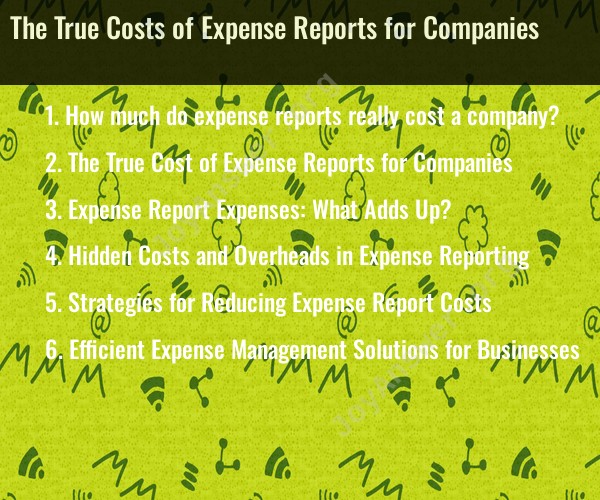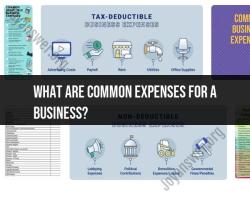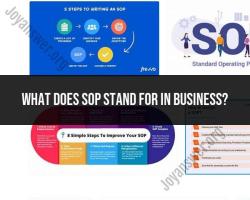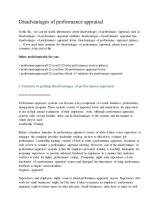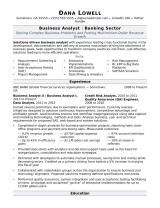How much do expense reports really cost a company?
The true cost of expense reports for a company can vary significantly depending on the size of the organization, the efficiency of its expense management processes, and the tools or systems used. Here are some of the key cost factors associated with expense reports:
Labor Costs:
- Employee Time: Employees spend time creating, reviewing, and submitting expense reports. Managers and finance teams also spend time reviewing and approving them. The more manual the process, the more time it consumes.
- Finance Team: Finance personnel spend time processing, verifying, and reconciling expense reports.
Errors and Fraud:
- Expense report errors and fraud can result in additional costs. Detecting and addressing these issues may require investigations and audits.
Administrative Costs:
- Administrative overhead includes the cost of printing, storing, and managing physical receipts and paperwork.
- Costs related to mailing or shipping expense reports or receipts.
Software and Technology:
- Companies may invest in expense management software or platforms to streamline the process. The cost of purchasing and maintaining such software is a consideration.
Training and Education:
- Training employees and managers on how to use expense reporting tools and follow company policies can incur expenses.
Compliance and Audit Costs:
- Costs associated with ensuring compliance with tax regulations and internal policies. This may include hiring auditors or consultants to review expenses and processes.
Delayed Reimbursements:
- Delayed reimbursements can impact employee morale and may have associated costs if employees need to take personal loans or incur interest charges.
Opportunity Costs:
- Time spent on expense reporting and approvals could be used for more productive tasks. Opportunity costs arise when valuable employee time is diverted to administrative tasks.
Travel and Entertainment Costs:
- Overspending on travel and entertainment expenses adds to the overall cost. Implementing effective expense policies and controls can help manage these costs.
Transaction Fees:
- Some financial institutions or service providers may charge transaction fees for processing expense reimbursements or corporate credit card transactions.
Data Analysis and Reporting:
- Extracting meaningful insights from expense data requires tools and possibly dedicated personnel, adding to the cost.
Tax Implications:
- Expenses can have tax implications for the company. Managing these implications may require accounting and legal expertise.
It's important to note that the costs associated with expense reports can be both direct (e.g., software licensing fees) and indirect (e.g., the time employees spend on manual data entry). The true cost can be significant, especially for larger organizations with many employees and complex expense reporting requirements.
Efficient expense management systems, streamlined processes, and proactive measures to reduce errors and fraud can help lower the overall cost of expense reports for a company. Many organizations are turning to digital expense management software and automation to reduce these costs and improve accuracy and efficiency in managing expenses.
The True Cost of Expense Reports for Companies
Expense reports can be a costly headache for businesses. According to a study by the Aberdeen Group, the average cost of processing an expense report is $31. This includes the time spent by employees filling out and submitting reports, as well as the time spent by finance staff reviewing and approving them.
Expense Report Expenses: What Adds Up?
The direct costs of expense reports include:
- Employee time: The time spent by employees filling out and submitting expense reports can be significant. A study by Certify found that the average employee spends four hours per month on expense reports.
- Finance staff time: Finance staff also spend a significant amount of time processing expense reports. A study by Concur found that the average finance employee spends 10 hours per week on expense reports.
- Software costs: Many businesses use expense reporting software to automate the process. However, this software can be expensive, with annual subscription fees ranging from hundreds to thousands of dollars.
Hidden Costs and Overheads in Expense Reporting
In addition to the direct costs listed above, there are also a number of hidden costs and overheads associated with expense reports, including:
- Errors and inaccuracies: Errors and inaccuracies in expense reports can lead to overpayments, which can cost businesses money.
- Fraud: Expense report fraud is a serious problem, costing businesses billions of dollars each year.
- Compliance costs: Businesses must comply with a variety of regulations related to expense reporting, such as the Internal Revenue Code. This can be costly and time-consuming.
Strategies for Reducing Expense Report Costs
There are a number of strategies that businesses can use to reduce the cost of expense reports, including:
- Automate the process: Expense reporting software can help businesses automate the process of submitting, reviewing, and approving expense reports. This can save businesses a significant amount of time and money.
- Implement policies and procedures: Businesses should have clear policies and procedures in place for expense reporting. This can help to reduce errors and inaccuracies, as well as fraud.
- Train employees: Employees should be trained on the company's expense reporting policies and procedures. This can help to ensure that employees are filling out and submitting their expense reports correctly.
- Use corporate cards: Corporate cards can help businesses to reduce the cost of expense reports by eliminating the need for employees to reimburse themselves for expenses.
Efficient Expense Management Solutions for Businesses
There are a number of efficient expense management solutions available to businesses, including:
- Expense reporting software: Expense reporting software can help businesses automate the process of submitting, reviewing, and approving expense reports. This can save businesses a significant amount of time and money.
- Travel management software: Travel management software can help businesses to manage their travel expenses more efficiently. This can include booking flights and hotels, as well as tracking and reporting on travel expenses.
- Integrated expense management solutions: Integrated expense management solutions combine expense reporting and travel management software into a single platform. This can provide businesses with a comprehensive solution for managing their expenses.
By implementing efficient expense management solutions, businesses can reduce the cost of expense reports and improve their overall financial performance.
